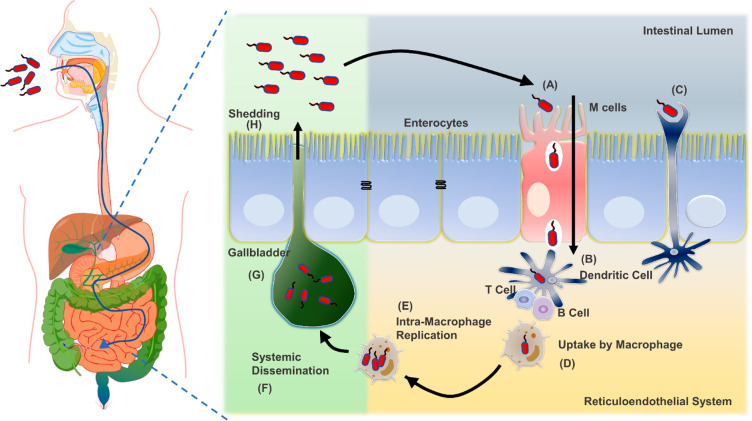Figure 2.
The course of Salmonella infection and long-term carriage. Initially, (A) Salmonella preferentially enters M cells, (B) which transport them to the lymphoid cells (T and B) in the underlying Peyer’s patches. (C) It can also be taken up by dendritic cells, elongated dendrites through the intestinal epithelial barrier. (D) Once across the epithelium, Salmonella serotypes associated with systemic illness enter intestinal macrophages and (E) undergo intramacrophage replication and (F) disseminate throughout the reticuloendothelial system, leading to systemic infections. (G) Further colonization of the gallbladder leads to (H) chronic carriage and the bacterium’s shedding through this mechanism. The green background shade depicts the GI tract near the gallbladder opening, and the yellow background depicts the GI tract’s intestinal areas.

